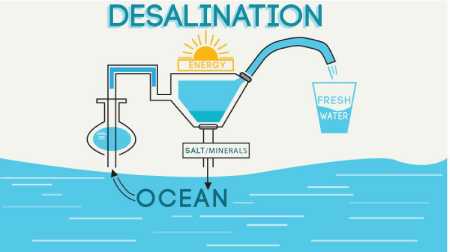MIT engineers have developed a new desalination system that operates in harmony with the sun’s natural rhythms.
This solar-powered system removes salt from water at a rate that fluctuates with changes in sunlight. As the sun intensifies during the day, the system increases its desalination process, and it automatically adjusts to sudden shifts in sunlight, such as slowing down when a cloud passes or speeding up when the sky clears.
Because the system responds rapidly to subtle variations in sunlight, it efficiently maximizes solar energy use, producing significant amounts of clean water despite changing light conditions throughout the day. Unlike other solar-powered desalination designs, MIT’s system does not require batteries for energy storage or backup power from the grid.
The engineers tested a prototype on groundwater wells in New Mexico for six months, under varying weather conditions and different water types. On average, the system captured over 94 percent of the electrical energy generated by its solar panels, producing up to 5,000 liters of water per day, even with large fluctuations in sunlight.
“Conventional desalination technologies need steady power and rely on batteries to handle variable solar power. Our technology directly uses solar power, adapting to the sun’s changes, to efficiently produce water,” says Amos Winter, the Germeshausen Professor of Mechanical Engineering and director of MIT’s K. Lisa Yang Global Engineering and Research (GEAR) Center. “Creating drinking water using renewable energy without battery storage is a major challenge — and we’ve accomplished that.”
The system is specifically designed to desalinate brackish groundwater — a salty source found in underground reservoirs, which is more abundant than fresh groundwater. The researchers see brackish groundwater as a largely untapped source of drinking water, particularly as fresh water supplies are increasingly stressed around the world. This renewable, battery-free desalination system could offer affordable drinking water, especially for inland communities with limited access to seawater and electricity grids.
“Most people live too far from the coast for seawater desalination to be feasible, so they rely on groundwater, especially in remote, low-income areas. Unfortunately, this groundwater is becoming more saline due to climate change,” says Jonathan Bessette, an MIT PhD student in mechanical engineering. “This technology could provide sustainable, affordable clean water to underserved regions worldwide.”
Details of the new system are reported in *Nature Water*, co-authored by Bessette, Winter, and staff engineer Shane Pratt.
- Press release – Massachusetts Institute of Technology







